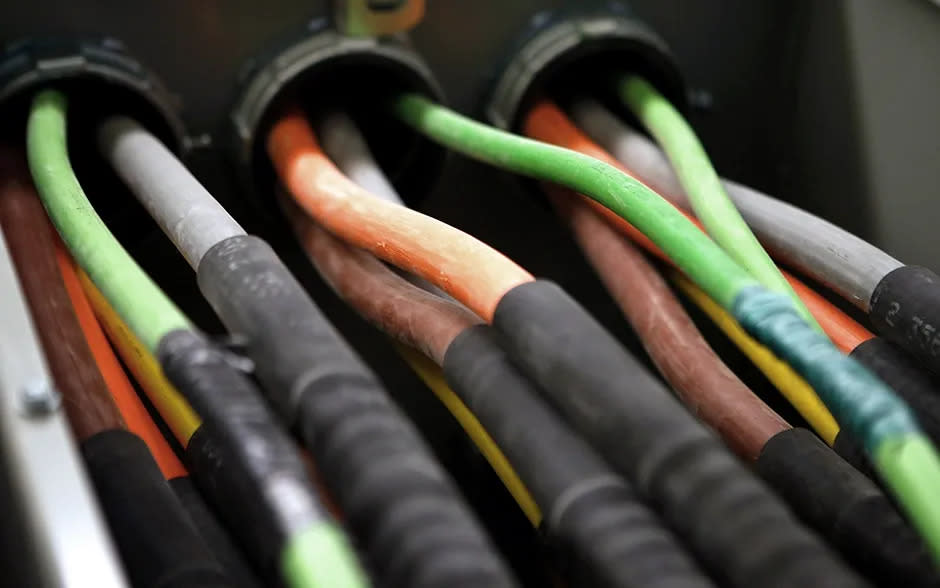Why Walz wants to spend $276M on broadband on top of nearly $1 billion in federal funds

- Oops!Something went wrong.Please try again later.
Renewed interest in public funding to subsidize construction of high-speed internet infrastructure in rural areas since the COVID-19 pandemic began has resulted in gobs of broadband money in Minnesota — at least compared to what used to be spent on the issue.
But the oodles of cash, mostly approved by the federal government over the last few years, is still not enough for Minnesota to meet its latest broadband goals, according to state officials. So Gov. Tim Walz’s administration has proposed spending another $276 million in the two-year budget.
The money would propel the state toward its goal of having universal access to high-speed internet by 2026, which might cost $426 million in the next four years, according to one estimate by the state’s broadband task force.
The $276 million would be a huge amount of state money for internet infrastructure, if it’s approved by lawmakers. But the total is a proverbial drop in the bucket of Minnesota’s $17.6 billion budget surplus, underscoring just how much cash lawmakers have at their disposal.
It also reinforces how the Walz administration is hoping to spend money on one-time expenses rather than ongoing programs that would leave the state on the hook for more cash in future years with no assurances that Minnesota’s finances will be this rosy.
“It’s a lot,” Steve Grove, commissioner of the Minnesota Department of Employment and Economic Development, said of the $276 million in an interview with MinnPost. “But it’s kind of the perfect one-time money spend.”
Minnesota has had two goals for high-speed internet in Minnesota. Its first goal was for universal access to wireline internet service with download speeds of at least 25 Megabits per second and upload speeds of 3 Megabits per second by 2022. But the state missed that mark. Only 92% of Minnesota households and businesses had that option, according to data released by the Minnesota Governor’s Task Force on Broadband in an annual report.
The worst-connected counties as of Oct. 31 were Kanabec, Pine and Murray counties.
However, broadband officials are more focused on a much faster speed goal for universal access to 100/20 Mbps by 2026, which they say is more relevant to modern internet needs. About 88% of the state had access to that level of broadband in October estimates, and the task force says roughly 291,000 households and businesses lack the needed infrastructure.
So how much would it cost to serve all those homes? Not a small amount: $2.76 billion.
But most of that cost won’t fall on Minnesota taxpayers. State grants subsidize telecom companies who build service infrastructure in areas where it would otherwise be too expensive. But the grants typically require a 50% match from broadband developers or others involved in the project, meaning Minnesota is on the hook only for half the price.
There are also a slew of federal broadband programs that will help Minnesota cover the remaining $1.38 billion. The broadband task force estimated the state is in line for $968 million from the federal government, most of which is from the infrastructure bill that passed Congress in 2021.
What’s left for Minnesota, according to the task force report, is roughly $426 million, a price tag that factors in administrative costs and is based on a 50% match. (Minnesota almost had an additional $311 million grant from the feds to cover much of it, but the FCC stripped the award from embattled LTD Broadband last year over concerns the company couldn’t deliver.)
If the state decided to fund 75% of each broadband project designed to reach the state’s goals, the cost to Minnesota would balloon to $1.14 billion over the next four years. Many of the remaining infrastructure needs are in hard-to-reach places, so it’s possible the state needs to offer bigger subsidies for developers to entice them into projects.
Grove said the state is factoring in “probably having to shift some of the matching percentages.”
“50/50 might not work after a while,” Grove said. And the commissioner said DEED is focusing on whether they can actually get that much money out fast enough based on the speed of the market. The amount of money the broadband market can handle at once has been a point of contention among Democrats when debating how much to spend on broadband in the past.
In the end, Grove said the $276 million was based on their “best guess” of how much state money was needed after the federal cash to hit speed goals.
“We should make the case to try to be the first state to do it,” Grove said of universal high-speed internet access.
This article originally appeared on St. Cloud Times: Why Walz wants to spend $276M on broadband on top of federal funds

